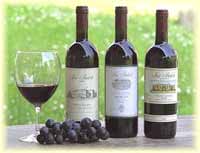Places of interest
Tuscany Chianti Wine
Urban planning and places of interest
The entire historical city is in its with an interest place. Delimited from the so-called the "tree-lined avenues" (on the tracing of it walls medieval demolished in 1865-1869), includes all almost the more important cultural assets than Florence, from the 1982 it declares from the Unesco patrimony to you of the humanity. It opens the review, necessarily narrow, the central Dome, placed side by side from the Bell tower of Giotto and faced from the baptistry of Saint Giovanni (of uncertain dating - it probably came constructed between the XI and XII the century - was riconsacrato in 1509), much famous also for the bronzee doors of Lorenzo Ghiberti and Andrea Pisano. They follow in the nordorientale quadrant: the Palace Medici-Riccardi, of Michelozzo (realized to leave from 1444), with inner nail head frescoed (between 1459 and 1460) from Benozzo Gozzoli; the basilica of Saint Lorenzo (of 1442-1446), of Brunelleschi, than the participations of Donatello (Old Sagrestia) and Michelangelo (New Sagrestia) rendered still more precious; the Museum of Saint Mark, great callback for the capolavori of the Angelic Blessed soul, which in the convent omonimo it lived between 1438 and 1446 with the name of between Giovanni from Fiesole; the Gallery of the Academy, risen of michelangiolesco museum that receives, between the other jobs, also celebre the David (the 1501-1504) and harmonious Announced rinascimentale public square of the Saintest one, redefined in the lines urban planning from Brunelleschi.  Tuscany Florence Wine ChiantiThe political-cultural centralità of public square of the Lordship (to south of the Dome) ribadita from the Old Palace, erected to leave from the 1299 (residence of the Doctors from 1540 to 1565, it accommodated the Italian Parliament in the years of Florence understood them and from 1872 it is center of the town hall), and from the neighbor insigne Gallery of the Uffizi, in proximity of which the Museum of the Bargello and the trecentesca basilica of Croce Saint are found (with facade of 1863), pantheon of illustrious men, with the adjacent Nail head Crazy of Brunelleschi. The Oltrarno, which it is reached for the Old Bridge (constructed in XIV the century), boasts the great museale complex of the quattrocentesco Pitti Palace (with capolavori of Cimabue, Filippo Lippi, Giovanni Bellini, Giorgione, Raffaello, Tiziano, Veronese, Gian Lorenzo Bernini, Antonio Canova) and, on the rear declivity to collinare is the garden of Boboli, of cinquecentesca foundation; in Oltrarno, always not distant from the aristocrat via May, they signal the rinascimentale church (work of Filippo Brunelleschi) of Saint Spirito and that one (rifared in 1771) of the Carmine, with frescoes of Masolino, Masaccio and Filippino Lippi. In the quadrant the north-west they rise the Palace Chokes (realized in exemplary rinascimentali shapes between the 1489 and 1504) and Saint Maria Novel, with trecentesca facade that in the 1458 Leon Alberti Batiste it reshaped in the rinascimentale taste. To cite, on the hill to south-east, the Michelangelo large square, that it offers more to the classic panorama of the city, and Saint Miniato to the Mount, between the first expressions (it was begun in 1018) of the Romanesque one in Tuscany. Fiesole, finally, 8 km to the northeast, is one of the more colorful centers between those situates to you in the collinari outskirtses of Florence.
Tuscany Florence Wine ChiantiThe political-cultural centralità of public square of the Lordship (to south of the Dome) ribadita from the Old Palace, erected to leave from the 1299 (residence of the Doctors from 1540 to 1565, it accommodated the Italian Parliament in the years of Florence understood them and from 1872 it is center of the town hall), and from the neighbor insigne Gallery of the Uffizi, in proximity of which the Museum of the Bargello and the trecentesca basilica of Croce Saint are found (with facade of 1863), pantheon of illustrious men, with the adjacent Nail head Crazy of Brunelleschi. The Oltrarno, which it is reached for the Old Bridge (constructed in XIV the century), boasts the great museale complex of the quattrocentesco Pitti Palace (with capolavori of Cimabue, Filippo Lippi, Giovanni Bellini, Giorgione, Raffaello, Tiziano, Veronese, Gian Lorenzo Bernini, Antonio Canova) and, on the rear declivity to collinare is the garden of Boboli, of cinquecentesca foundation; in Oltrarno, always not distant from the aristocrat via May, they signal the rinascimentale church (work of Filippo Brunelleschi) of Saint Spirito and that one (rifared in 1771) of the Carmine, with frescoes of Masolino, Masaccio and Filippino Lippi. In the quadrant the north-west they rise the Palace Chokes (realized in exemplary rinascimentali shapes between the 1489 and 1504) and Saint Maria Novel, with trecentesca facade that in the 1458 Leon Alberti Batiste it reshaped in the rinascimentale taste. To cite, on the hill to south-east, the Michelangelo large square, that it offers more to the classic panorama of the city, and Saint Miniato to the Mount, between the first expressions (it was begun in 1018) of the Romanesque one in Tuscany. Fiesole, finally, 8 km to the northeast, is one of the more colorful centers between those situates to you in the collinari outskirtses of Florence.
